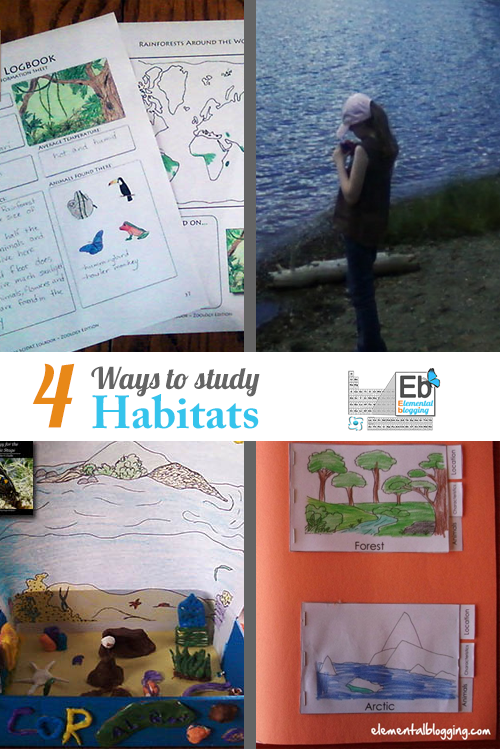 Welcome to the Science Corner!
Welcome to the Science Corner!
This week, we will be discussing habitats and four ways that you can use to study about them.
What is a habitat?
Habitat – The natural environment of an plant or animal.
A habitat describes the particular neighborhood where a plant or animal is found, including all of the living and non-living factors that surround it.
Having an awareness of habitats is an important scientific concept for all students to know. However, they don’t have to be studied in a dry, textbook-reading manner.
Here are four suggestions that will help you to teach your student about habitats in a way that they will enjoy and remember.
4 Ways to Study Habitats
We have studied habitats through diorama projects, notebooking, lapbooks, and nature study. I thought that for today’s science corner, we could take a closer look at each!
#1 – Diorama Project
My favorite way to study habitats is by making a diorama! The student digs deep into one habitat, learning all about it from various science encyclopedias or from the internet. Then, they can create their own version.
Since the process of making a diorama engages both the left and right side of the brain, the likelihood that the student will remember what they have studied is very high. Here’s a look at two different dioramas we have made:
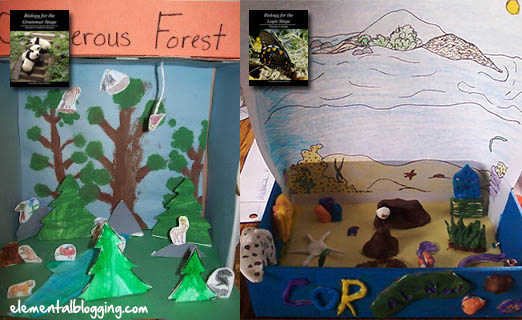
However, if you have a student that dislikes crafty projects, you can always make habitat posters instead. I have created two different types that you can download for free:
You can also use one of these posters as a backdrop for your diorama as my daughter did in the picture above.
#2 – Notebooking
I love to use notebooking and living books or encyclopedias hand-in-hand. So, you can begin by choosing a living book or an encyclopedia spread about the habitat you want to study and read it to your student. (If they are old enough they can read it on their own.)
After reading the book or spread, have the student narrate back to you what they have learned about the habitat. Then create a page or two that displays what they have learned. 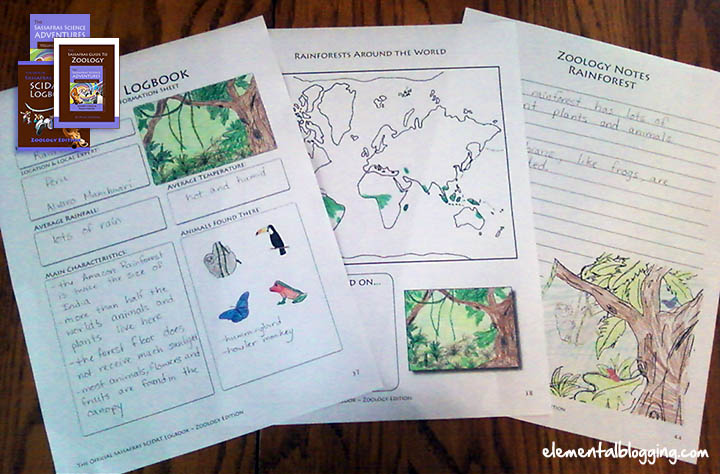 You can read more about what I believe notebooking should included over at my interview with the Notebooking Fairy.
You can read more about what I believe notebooking should included over at my interview with the Notebooking Fairy.
Here are a few good suggestions for reading about habitats beyond our Sassafras Science series:
- The Among the… series by Clara Dillingham Pierson, such as Among the Farmyard People
- ?A Desert Habitat (Introducing Habitats) by Kelley Macaulay and Bobbie Kalman??
- A Grassland Habitat (Introducing Habitats) by Kelley Macaulay and Bobbie Kalman
- A Rainforest Habitat (Introducing Habitats) by Molly Aloian
- A Forest Habitat (Introducing Habitats) by Bobbie Kalman
- Northern Refuge: A Story of a Canadian Boreal Forest by Audrey Fraggalosch
- ?The Arctic Habitat (Introducing Habitats) by Molly Aloian and Bobbie Kalman?
- Arctic Tundra (Habitats) by Michael
#3 – Lapbooks
Lapbooks are a great way to study any topic!
Simply begin by reading a book on each of the habitats you want to study. Then, make a mini-book for every one and add the mini-books into a larger lapbook on habitats. 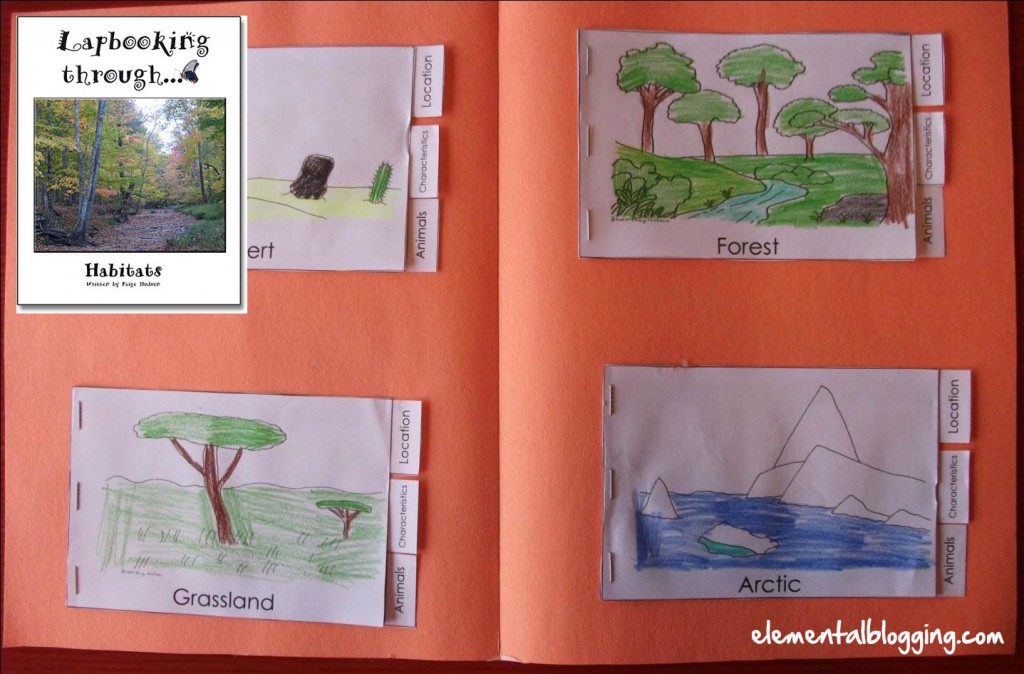 You can create your own lapbook or we offer a program called Lapbooking through Habitats that lays this all out for you.
You can create your own lapbook or we offer a program called Lapbooking through Habitats that lays this all out for you.
#4 – Nature Study
Last, but certainly not least, you can study your own habitat through nature study.
You can begin by explaining what a habitat is, some of the more familiar habitats and their characteristics to your students. 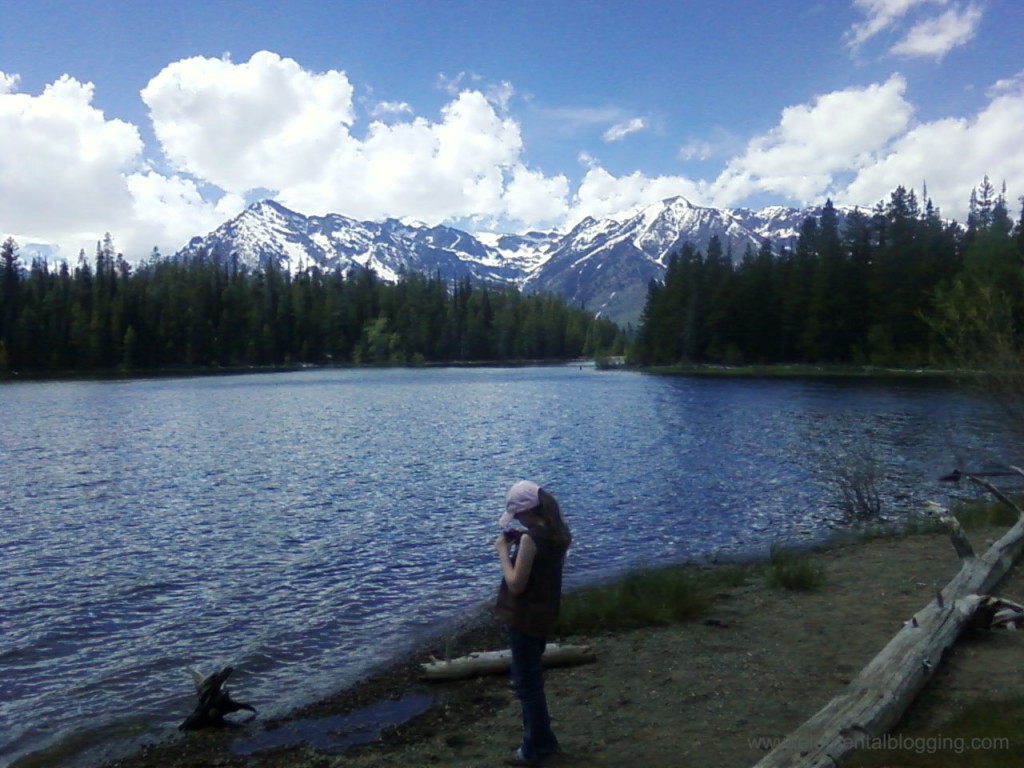 Then take a walk in your neighborhood or on a nature trail nearby looking for clues to determine which the habitat you live in. You will want to answer questions like:
Then take a walk in your neighborhood or on a nature trail nearby looking for clues to determine which the habitat you live in. You will want to answer questions like:
- What kinds of plants do you see?
- What kinds of animals do you see?
- What is the weather like today?
- What is the weather usually like in spring, summer, fall and winter?
You want to allow your student to observe the environment, find clues from there and then use those clues to determine the habitat they are in. If they haven’t studied habitats before you will have to give them the information they need along the way.
The Final Product
So, my top four ways to study habitats with your student are through dioramas, notebooking, lapbooks, and nature study.
Have you used another way? Leave a comment below to let me know about it!

 Sign up below to receive weekly tips & tools for homeschool science and we'll send you a FREE copy of
Sign up below to receive weekly tips & tools for homeschool science and we'll send you a FREE copy of